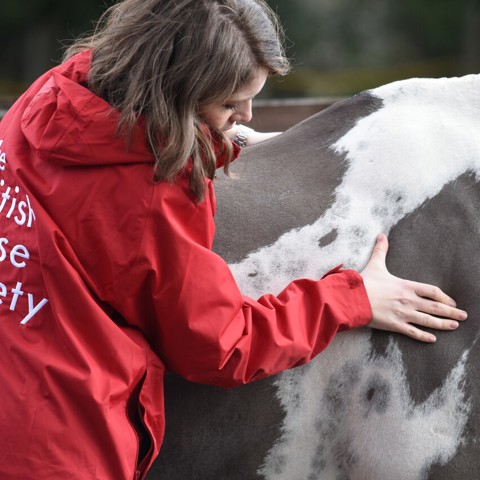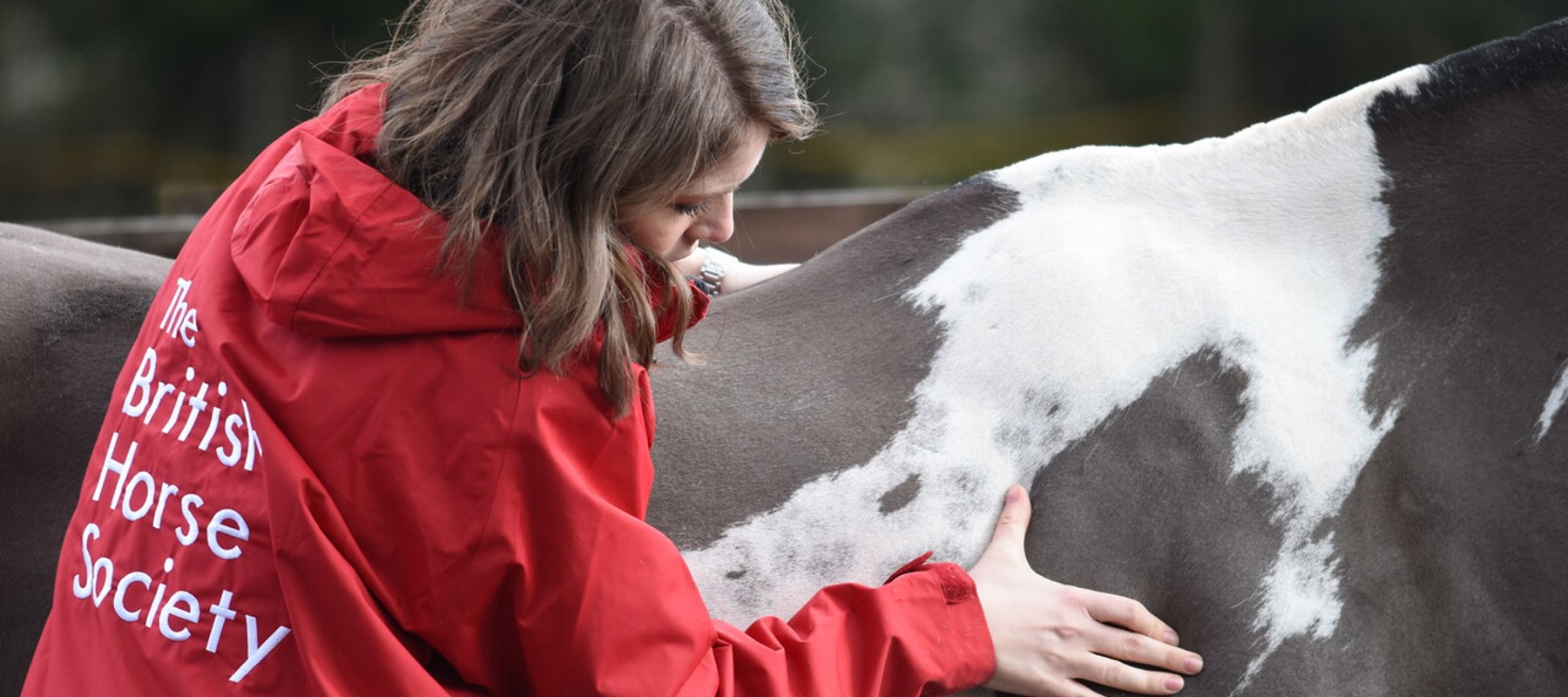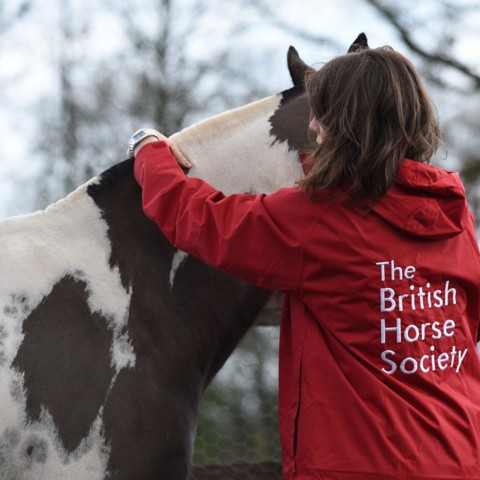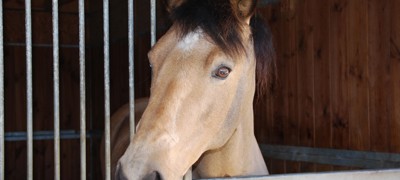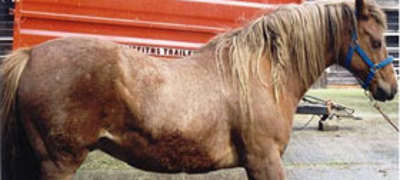Weight can change depending on the amount/type of food the horse is eating and how much exercise they are doing. There are several tools to help with monitoring weight. If your horse starts to become an unhealthy weight, whether they’re too thin or has excess weight gain, make sure any changes to your horse’s diet and management are made gradually.
Fat Scoring
Fat Scoring (also referred to as Body Condition Scoring) is an objective way to assess your horse’s overall fat covering to help determine whether they are a healthy weight. There are three key areas to consider: neck, body and hindquarters and you will need to look at and get hands-on to help you determine between muscle and fat.
You will need to use a different fat scoring system to assess the weight of your donkey. You can find the Donkey Body Condition Score Chart on the Donkey Sanctuary’s website.
Score each of these key areas individually from 0-5 using the images and descriptions below. A healthy fat covering is a score of 2.5 – 3 out of 5 for most horses, unless your vet advises otherwise. It can be normal for fit event horses or racehorses to look as if they're underweight. However, they’re in fact physically fit and healthy with well-developed muscles.
Using a weigh tape, alongside fat scoring every two weeks, will help you to monitor your horse’s weight. Weigh tapes can be very variable and may not be 100% accurate but are a good tool to help monitor if your horse is maintaining, losing, or gaining weight. If you have access to a weighbridge this will provide an accurate weight for your horse. Many vet practices, feed companies and the BHS offer owners and carers the opportunity to weigh their horses by bringing a weighbridge to the yard.
 play-circle
play-circle
Watch
Introduction to Fat Scoring Horses
Why is excess weight gain an increasing problem?
Compared to Thoroughbreds, draught-types, cobs and native breeds are more likely to be overweight or obese. These types of horses have evolved to survive harsh, cold and wet winters and make the most of poor-quality grazing, with Shetland ponies being a prime example. Management nowadays means many horses have access to quality grazing all year round and are exposed to milder winters with additional rugging and stabling. The resulting factor is horses don’t have to use as much energy to keep warm and with plenty of calories being consumed, weight (and therefore fat) will begin to increase.
What's the danger?
Worryingly, in the UK up to 50% of horses are obese with this figure creeping up to 70% in some native pony breeds1. Horses carrying too much fat can be at an increased risk of health issues such as Equine Metabolic Syndrome (EMS), laminitis and arthritis which can be detrimental to their welfare. Recent research has shown that excessive weight gain more than doubles the risk of laminitis in horses and ponies2 - highlighting the importance of regularly monitoring your horse’s weight.
Equine Metabolic Syndrome (EMS) and Cushing’s Disease
Horses with EMS and/or Cushing’s Disease can be trickier to fat score accurately. This is because horses with EMS tend to have fat distributed abnormally along their body, for example, fat pads on their neck and hindquarters. Horses with Cushing’s Disease may also have abnormal fat distribution but could have muscle wastage and a pot-bellied appearance with their ribs visible. Speak to your vet for advice.
Donkeys
chevron-down
chevron-up
You will need to use a different fat scoring system to assess the weight of your donkey. You can find the Donkey Body Condition Score Chart on the Donkey Sanctuary’s website
Horse Fat Scoring Chart
The chart below will help you to work out your horse’s fat score. If you’re not sure how to fat score, use our step-by-step guide.
0 - Very unhealthy (Emaciated)

- Neck very thin with little muscle and no fat covering the top
- No fatty tissue can be felt on the horse
- Ribs easily seen and felt
- Shape of each individual bone can be easily seen
- Skin tight over bones
- Spine easily seen and felt
- Very sunken and sloping from the spine to the ribs
- Tail bone protrudes
- Very sunken sloping hindquarters either side of the spine
- Pelvis and hips are very easy to see and feel
- Large gap in between top of back legs and under tail
1 - Unhealthy (Thin)

- Neck thin with little muscle and fat covering the top
- Very little fatty tissue can be felt on the horse
- Ribs can be seen and felt
- Sunken and sloping from the spine to the ribs
- Spine can be seen and felt without pressure
- Tail bone protrudes slightly
- Sunken sloping hindquarters either side of the spine
- Pelvis and hips are easy to see and feel
- Large gap in between top of back legs and under tail
2 - Moderate (Lean)
Most fit racehorses or eventers will normally be this fat score

- A slightly thin neck
- Shape of the neck muscles can be seen
- A very thin layer of fat covering the body
- Ribs are just visible and can be felt
- Spine can be felt
- Tail bone protrudes slightly
- Slightly sunken sloping hindquarters either side of the spine
- Hip bones easily visible but covered by a thin layer of fat
- Slight gap in between top of back legs and under the tail
3 - Healthy (Good)
A fat score of 2.5-3 is normally ideal for most horse, unless your vet advises otherwise

- Shape of the neck muscles are less clear
- No crest (no fat underneath the mane) except for stallions
- Thin layer of fat covering the body
- Ribs cannot be seen but easily felt with light pressure
- Spine is covered but can still be felt
- Hindquarters are beginning to become rounder in shape
- Hip bones are just visible and can be easily felt
4 - Unhealthy (Fat)

- Shape of the neck muscles cannot be seen
- Spongy fat can be felt along the neck, below the mane (known as the crest)
- Ribs well covered with fat which can be felt with firm pressure
- Fat can be seen and felt behind the shoulders
- Pelvis and hips are difficult to feel
- Hindquarters are rounded
- Fat around tail head
- A ‘gutter’ can be seen along the spine to the tail head
5 - Very unhealthy (Obese)

- Wide and firm neck
- Large amount of fat below the mane (known as the crest)
- Neck muscles not visible
- Ribs are buried in fat and cannot be felt
- Pads of fat along body
- Back is flat and broad like a table top
- Hips are buried and cannot be felt
- Hindquarters are a well-rounded apple shape
- Large amounts of fat around tail head
- A deep ‘gutter’ can be seen along the spine to the tail head
References
chevron-down
chevron-up
1) Rendle, D., et al (2018) Equine obesity: current perspectives UK-Vet Equine. 2(5).
2) Wylie, C.E., et al (2013) Risk factors for equine laminitis: a case-control study conducted in veterinary-registered horses and ponies in Great Britain between 2009 and 2011. The Veterinary Journal, 198(1), pp.57-69.

